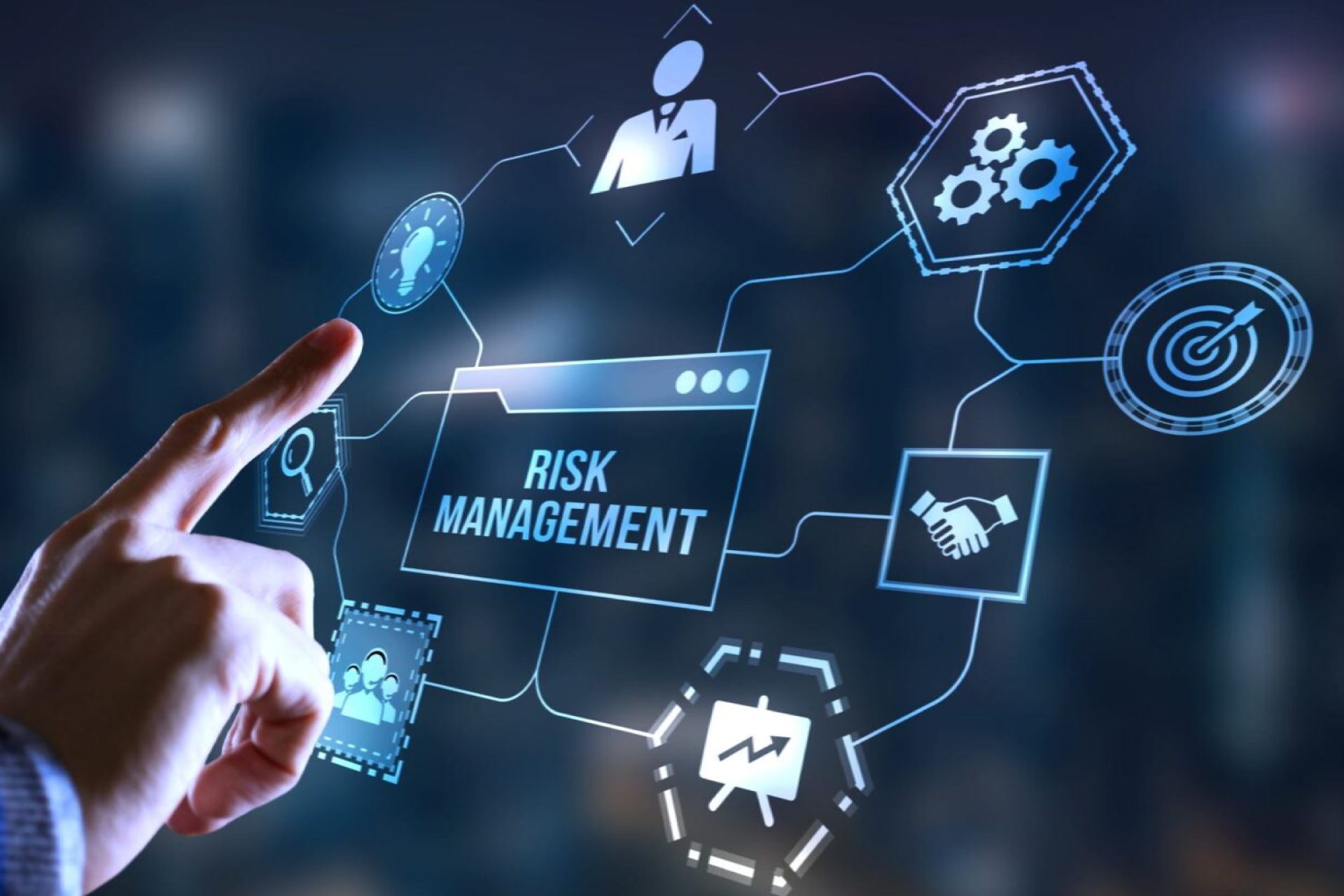Table of Contents
What is Risk Management?
Risk management is the process of identifying, assessing, and prioritizing risks, followed by coordinated efforts to minimize or control the probability and impact of negative events. In essence, it’s about preparing for the unexpected and taking steps to avoid or mitigate the damage these risks could cause to your business. Risk management encompasses a wide range of activities, from strategic decision-making and financial forecasting to disaster recovery planning and crisis communication.
Effective www.office-one-plus.com allows businesses to anticipate potential problems, make informed decisions, and maintain stability, even in times of uncertainty.
Types of Risks in Business
There are various types of risks that businesses must be aware of and manage. These can be broadly categorized into the following types:
1. Strategic Risk
Strategic risks are risks that arise from a company’s business strategy, such as entering a new market, launching a new product, or making a significant acquisition. These risks can affect the company’s competitive position and long-term goals.
- Example: A company may face strategic risk if it expands into an unfamiliar market without conducting thorough research, leading to poor sales performance and loss of investment.
2. Financial Risk
Financial risks stem from the company’s financial structure and market fluctuations. These can include risks related to cash flow, investments, credit, and interest rates. Financial risks can significantly impact a company’s profitability and stability.
- Example: A company that relies heavily on debt to finance operations might face financial risk if interest rates increase or if it struggles to meet its debt obligations.
3. Operational Risk
Operational risks arise from failures in day-to-day operations. This can include issues related to processes, technology, human resources, and supply chain disruptions. Operational risks can lead to inefficiencies, lost revenue, and reputational damage.
- Example: A manufacturing company might face operational risks if a key supplier fails to deliver components on time, causing delays in production and delivery to customers.
4. Compliance Risk
Compliance risks are risks related to legal and regulatory requirements. Businesses are subject to a wide range of laws, rules, and regulations that govern how they operate, from labor laws and environmental regulations to industry-specific compliance requirements.
- Example: A company could face significant fines or legal action for failing to comply with environmental laws or data protection regulations like GDPR.
5. Reputational Risk
Reputational risks arise from negative public perception or loss of customer trust. A company’s reputation is one of its most valuable assets, and any damage to it can result in loss of business, diminished brand value, and reduced market share.
- Example: A company might experience reputational damage if it is caught in a public scandal, such as a product recall or unethical business practices.
6. Cybersecurity Risk
As businesses increasingly rely on digital platforms, cybersecurity risks have become more prominent. These risks involve threats to a company’s digital infrastructure, such as data breaches, hacking, and ransomware attacks.
- Example: A financial institution could face significant cybersecurity risks if hackers gain access to sensitive customer data, leading to legal consequences and loss of customer trust.
7. Market Risk
Market risks are related to changes in the economic, political, or competitive environment that can impact a business’s ability to operate profitably. These risks include changes in consumer preferences, new competitors, economic recessions, or regulatory changes.
- Example: A company that depends heavily on global supply chains may face market risks due to tariffs, trade wars, or fluctuations in exchange rates.
The Risk Management Process
Managing risk involves a structured approach to identifying, assessing, and addressing potential risks. The process typically involves the following steps:
1. Risk Identification
The first step in risk management is to identify potential risks that could impact the business. This involves looking at all aspects of the business and considering what could go wrong. Risks can be internal (e.g., employee turnover) or external (e.g., market downturns).
- Tools and Techniques:
- Brainstorming sessions with key stakeholders.
- SWOT analysis (assessing strengths, weaknesses, opportunities, and threats).
- Scenario planning.
2. Risk Assessment
Once risks have been identified, the next step is to assess their potential impact and the likelihood of occurrence. This helps prioritize risks based on their severity and probability, enabling the business to focus on the most significant threats first.
- Risk Matrix: This tool is often used to categorize risks by their likelihood and impact (e.g., high impact/low probability or low impact/high probability).
3. Risk Mitigation
After assessing risks, businesses need to develop strategies to reduce the likelihood or impact of those risks. Risk mitigation can involve implementing preventive measures, transferring the risk (e.g., through insurance), or creating contingency plans for when things go wrong.
- Examples of Mitigation Strategies:
- Diversifying supply chains to avoid dependency on a single source.
- Setting aside a reserve fund to manage financial risks.
- Investing in cybersecurity measures to protect against data breaches.
4. Risk Monitoring and Review
Risk management is an ongoing process. After mitigation strategies are implemented, it’s essential to continuously monitor risks and the effectiveness of the mitigation measures. Regularly reviewing and updating risk management plans ensures that businesses stay ahead of new and emerging threats.
- Tools for Monitoring:
- Regular risk assessments and audits.
- Implementing a risk management software to track and evaluate risks.
5. Risk Communication
Effective communication is crucial throughout the risk management process. It involves keeping stakeholders informed about risks, mitigation strategies, and any actions that need to be taken. Clear communication helps ensure that everyone is aligned and prepared to respond appropriately.
Risk Management Strategies
1. Avoidance
In some cases, the best way to manage risk is to avoid it altogether. If a particular activity or project has high risks that cannot be mitigated, it may be wise to avoid engaging in it.
- Example: A company might choose not to enter a market with high political instability or extreme regulatory risk.
2. Reduction
Risk reduction involves taking steps to minimize the likelihood or impact of a risk. This might include improving operational processes, investing in employee training, or upgrading technology to enhance security.
- Example: A business can reduce the risk of operational failure by investing in reliable software or automating repetitive tasks.
3. Transfer
Risk transfer involves shifting the burden of the risk to another party, typically through insurance, outsourcing, or contractual agreements.
- Example: A business might purchase insurance to transfer the financial risk of damage caused by natural disasters or cyberattacks.
4. Retention
In some cases, businesses may choose to accept a risk, particularly if the cost of mitigation is higher than the potential loss. This approach is often used for lower-priority risks or when the likelihood of the risk occurring is minimal.
- Example: A company may decide to retain the risk of small operational disruptions that are unlikely to cause significant harm.
The Importance of Risk Management
Effective risk management is essential for several reasons:
-
Minimizes Losses: By identifying and addressing risks early, businesses can prevent or minimize potential losses, whether financial, reputational, or operational.
-
Improves Decision-Making: With a clear understanding of risks, businesses can make informed decisions that align with their long-term objectives, increasing their chances of success.
-
Enhances Business Continuity: Risk management ensures that businesses are prepared for unexpected events, helping them maintain operations even in challenging circumstances.
-
Builds Stakeholder Confidence: By proactively managing risks, businesses demonstrate to investors, customers, and employees that they are committed to protecting their interests and ensuring sustainability.
-
Compliance and Legal Protection: Risk management helps businesses comply with industry regulations and legal requirements, reducing the risk of fines, lawsuits, or reputational damage.
Conclusion
Risk management is a critical aspect of business strategy, helping organizations anticipate and prepare for the uncertainties they face. By identifying risks, assessing their potential impact, and implementing effective mitigation strategies, businesses can protect their assets, optimize operations, and ensure long-term success. A proactive risk management approach not only safeguards the company against potential threats but also enables it to take calculated risks that drive innovation and growth.





